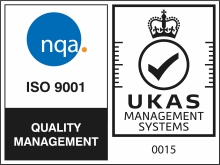
How to improve health and safety in the workplace - 4 proven steps
Every year, hundreds of thousands of people in the UK are injured or develop an ongoing physical or mental health condition as a direct result of their work.
In this blog, Nick Grinnell offers four proven ways to improve workplace safety, so your business doesn’t find itself being part of those statistics…
How to keep improving health and safety
Improving workplace safety requires input and effort from all parts of a business. From your newest employee on the books, to your site manager and the wider company leadership, everyone must work together to make safety a strategic priority and place it at the forefront of all business activity.
Our tips for businesses trying to achieve this are:
- Swap ‘best practice’ for ‘better practice’
- Set expectations and communicate them clearly
- Recognise the value
- Lead by example.
Let’s look at each of those in more detail…
Improving workplace safety #1 – Swap ‘best practice’ for ‘better practice’
Never assume that your current way of doing things is best. You might have implemented ‘best practice’ once, but advice changes with new technologies and as a result of wider changes in working habits, workplace management and the make-up of the workforce.
Instead, create a culture of continuous improvement – of always striving to find a better way. Establish fortnightly or monthly meetings to discuss one process or area of the business, and set your team the task of finding at least one improvement that can be made. Recognise and reward all suggestions, as even small un-developed ideas can spark a ‘lightbulb moment’ for someone else.
Promote continuous learning in your organisation, as well as networking with other people in your industry, as some of the best ideas may come from outside your business.
Improving workplace safety #2 – Set expectations and communicate them clearly
Are you clear about what you want to achieve, and how you’re going to achieve it? If not, how can you expect your team to understand and follow your direction?
Once you’re clear on your expectations and know how you are going to communicate them to your team, make sure you’re using all the touch points and communications channels available to you to explain and reinforce your message. Don’t forget to think visually, as well as about the different ways in which you can demonstrate the ‘why?’ behind what you’re doing.
Some people will ‘get it’ straight away, while others will need to have repeated exposure to consistent messaging across the likes of team briefings, posters around the physical environment, and refresher safety training.
Our tip: It’s important to ensure your existing employees are up-to-speed, but don’t forget about those yet to come – updating your induction processes and employee handbook in line with your strategic safety goals will help ensure new employees start off on the right foot.
Improving workplace safety #3 – Recognise the value
If you don’t recognise the value of what you’re trying to achieve and put consistent energy and dedication into working towards your safety goals, no one else will. Your employees need to understand the ‘why’ behind what you’re doing, otherwise they may not be incentivised to contribute the effort required to make a change.
Team leaders and managers can help to bring their teams on board. Encourage joint ownership of progress towards your safety goals by building targets into managers’ roles and responsibilities, and making safety a required consideration in mentoring relationships.
Consider whether you can implement a monthly theme or area of focus to encourage concerted effort towards step targets that will contribute towards your overarching goals.
Improving workplace safety #4 – Lead by example
People will follow where you lead, so ensure you don’t just talk the talk, but also walk the walk when it comes to putting safety first.
Whether it is conducting follow-up meetings, sharing new ideas and better practice, or checking in on teams during the working day, showing your team that you’re not too busy to put safety first will send a clear message about its importance to the business.
Likewise, try not to cancel or postpone safety meetings and events unless you absolutely have to, otherwise you risk sending your team the message that other things are more important.
I hope you found this helpful, for more tips on how to improve workplace safety, be sure to follow us on social media and sign up to our newsletter.

















